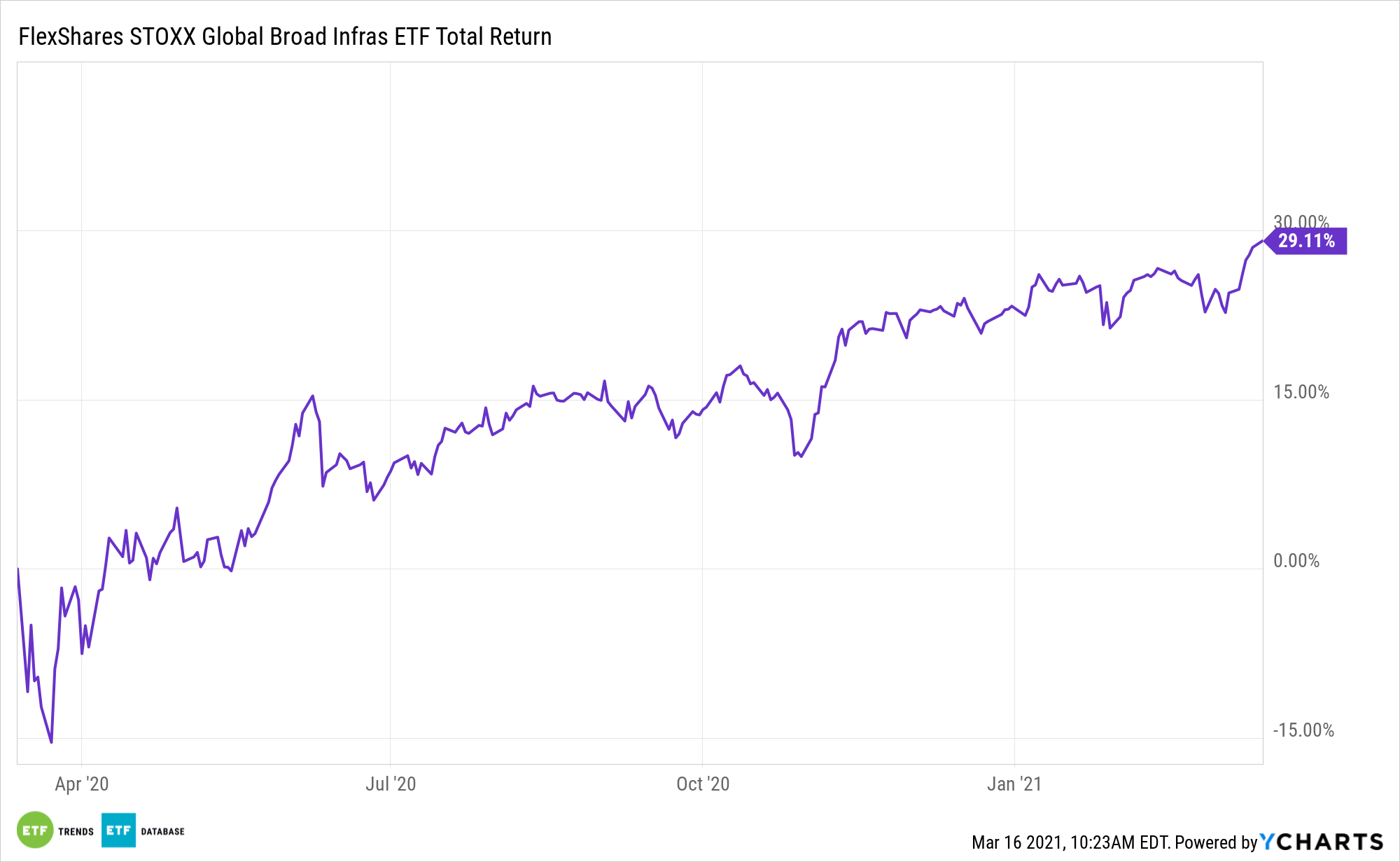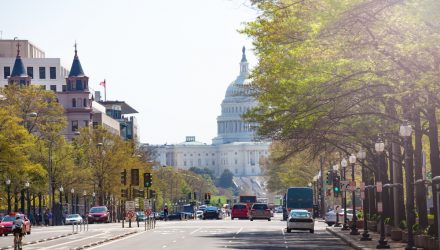There’s an old saying politics: “it’s always Infrastructure Week on Capitol Hill.” That quip will soon be put to the test and bring funds such as the FlexShares STOXX Global Broad Infrastructure Index Fund (NYSEArca: NFRA) into the spotlight.
NFRA tries to reflect the performance of the STOXX Global Broad Infrastructure Index, which identifies equities that derive the majority of revenue from infrastructure business, providing exposure to both traditional and non-traditional infrastructure sectors.
The near-term case for NFRA boils down to the notion that with the $1.9 trillion coronavirus stimulus package in the books, the Biden Administration will turn its attention to shoring up ailing U.S. infrastructure.
“President Biden signed the stimulus bill, dubbed the American Rescue Plan Act, into law on Thursday, in a move that delivers checks to households and supports economic demand as states reopen. The legislation has helped power the S&P 500 to about a 5% gain year-to-date. Now, the Biden administration hopes to pass an infrastructure spending package that would have both broader stock market and industry-specific implications for oil and metal miners,” reports Jacob Sonenshine for Barron’s.

The Unfolding Infrastructure Narrative
NFRA’s index focuses on long-lived assets in industries with very high barriers to entry, with at least 50% of their revenue from key sectors with a 3-month average daily trending volume of at least $1 million. The portfolio is weighted based on a free-float market cap with certain constraints to limit exposure in any one security, sub-sector, or country. The fund is rebalanced annually.
Investors should consider infrastructure sector-specific exchange traded funds after President Joe Biden laid out plans to upgrade aging U.S. infrastructure. The White House stated that the administration’s is looking to build “sustainable infrastructure that will withstand the impacts of climate change and fuel an American clean energy revolution.”
Transportation Secretary Pete Buttigieg previously said the U.S. government needs to rebuild the transportation sector in this post-pandemic environment.
“One important factor to consider would be the impact on inflation. More spending would support inflation—which could work against stocks—but the JPMorgan strategists point out that stock valuations would be able to withstand such a move. Higher inflation leads to higher Treasury yields, but the 10-year Treasury yield of 1.63% is still below the 2.2% expected rate of inflation for the next decade,” according to Barron’s.
NFRA is up 4.71% year-to-date and yields 2.23%.
For more on multi-asset strategies, visit our Multi-Asset Channel.
The opinions and forecasts expressed herein are solely those of Tom Lydon, and may not actually come to pass. Information on this site should not be used or construed as an offer to sell, a solicitation of an offer to buy, or a recommendation for any product.

